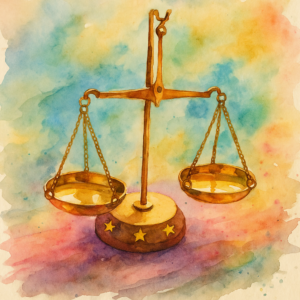“Et puis”, “quand même”, “normes liées à l’âge”, & “dans le passé”. Can you pick up all these phrases in today’s quiz? Take it on, we’re over 2/3 of the way through this podcast, and will be wrapping up soon. Help us finish strong and keep up your daily routine of listening practice in French!
Take the quiz, join the conversation.
Did you find this one challenging or easy? Did you hear something diffferent? What surprised you? What levels did you complete? Comment below and share what’s opening up for you with this quiz.
This clip is from Passerelles Episode 1. Listen and fill in what you hear below. Read more and find a translation below. Listen to the full episode here.
This audio sample and transcription is from Passerelles ep. 1. We do not own the content. Listen to the entire episode
anyway
What’s opening up for you with this clip?
The snippet in English
Find a translation of this snippet here, how much of this did you hear?
Et puis, aujourd’hui, on est quand même plus libéré des normes liées à l’âge que dans le passé.
What’s more, today we’re freer from age-related norms than in the past.
The above translation from Deepl. Source
What does “et puis” mean?
The expression “et puis” is a common French connector that translates to “and then” or “and also” in English. It’s used to link ideas, actions, or events in a sequence, or to add additional information.
Examples
- “Je vais aller au marché et puis à la bibliothèque.” (I’m going to go to the market and then to the library.)
- “Il est intelligent et puis très charmant.” (He’s intelligent and also very charming.)
Understand Deeper
“Et puis” is versatile and can be used in both formal and informal contexts to connect sentences or clauses, or to introduce a new piece of information.
- “Ensuite” (then, next)
- “De plus” (furthermore, moreover)
Alternatively, “Mais” (but) — When you want to introduce a contrasting idea, you’d use “mais” instead of “et puis.”
Fun Fact
In casual conversations, “et puis” can sometimes serve as a filler phrase, somewhat like “so then” or “and then” can in English.
In summary, “et puis” is a staple connector in French for linking ideas or actions in a sequence or for adding additional information.
What does “quand même” mean?
The phrase “quand même” is a versatile French expression that can mean “anyway,” “even so,” “all the same,” “nevertheless,” or even “really” depending on the context. It’s used to express surprise, disbelief, or relief and to underline a contrast or contradiction.
Examples:
- “Il est tard, mais je vais terminer ce projet quand même.” (It’s late, but I’m going to finish this project anyway.)
- “C’est cher, quand même!” (It’s expensive, isn’t it/really!)
Understand Deeper
You can use “quand même” in both formal and informal settings. However, the tone it sets is often casual or emotional, making it more common in spoken French than in formal writing.
Similar Phrases:
- “Tout de même” (all the same)
- “Néanmoins” (nevertheless)
Alternatively, “Au contraire” (on the contrary) — You would use this when you want to emphasize a point that goes against what was previously said.
It’s commonly heard in everyday conversations and seen in casual written correspondence, like text messages or emails.
Fun Facts
The flexibility of “quand même” means you’ll hear it in a variety of situations, ranging from expressing mild annoyance to showing adamant determination.
In summary, “quand même” is a multipurpose expression that adds emotional nuance, surprise, or emphasis to a sentence. It’s a valuable phrase for conveying more complex emotions or conditions in French.
It’s also interesting to see Deepl doesn’t even translate this into the English.
What does “normes liées à l’âge” mean?
The phrase “normes liées à l’âge” translates to “age-related norms” in English. It refers to societal or cultural expectations, standards, or rules that are associated with different ages or stages in life.
Examples:
- “Les normes liées à l’âge peuvent influencer la manière dont les gens perçoivent le vieillissement.” (Age-related norms can influence how people perceive aging.)
- “La pression des normes liées à l’âge pousse certains à se marier et avoir des enfants à un certain âge.” (The pressure of age-related norms pushes some people to marry and have children by a certain age.)
Understand Deeper
This phrase is more formal and is often found in academic, sociological, or psychological contexts. However, it could also come up in everyday discussions about societal expectations and age.
Similar Phrases:
- “Normes sociales” (social norms)
- “Attentes liées à l’âge” (age-related expectations)
Alternatively, “Non-conformité” (non-conformity) — Used when discussing behaviors or attitudes that go against societal norms.
Fun Facts
The concept of “normes liées à l’âge” becomes especially relevant during significant life milestones like turning 18, 30, or 50. These ages often come with societal expectations that might lead to what is commonly known as “la crise de la vingtaine” (the quarter-life crisis) or “la crise de la quarantaine” (the midlife crisis).
In summary, “normes liées à l’âge” refers to the expectations or rules that society imposes on individuals based on their age. These norms can significantly impact people’s lives, influencing their decisions, and even their self-perception.
What does “dans le passé” mean?
The phrase “dans le passé” translates to “in the past” in English. It is used to refer to events, situations, or conditions that have occurred previously but are not happening in the present.
Examples:
- “Dans le passé, j’étais plus timide.” (In the past, I was more shy.)
- “Il a fait des erreurs dans le passé, mais il a changé maintenant.” (He made mistakes in the past, but he’s changed now.)
Understand Deeper
The phrase can be used in both formal and informal contexts when discussing something that has happened before the current time. It serves as a temporal marker and can be used in a wide range of situations.
Similar Phrases:
- “Autrefois” (formerly)
- “Il y a longtemps” (a long time ago)
Alternatively,
- “Dans le présent” (in the present)
- “À l’avenir” (in the future)
Fun Facts:
The phrase is often used in historical or reflective discussions, sometimes invoking nostalgia or lessons learned. It’s a simple but effective way to draw attention to the temporal aspect of whatever subject you’re discussing.
In summary, “dans le passé” is a straightforward way to specify that something occurred in the past, and it is versatile enough to be used in various contexts and discussions. Whether you’re looking back on personal experiences or historical events, this phrase helps you set the temporal stage.
What did you love about this?
Comment below with your feedback! Tells us what you think. Send a note or leave a comment below. We appreciate the feedback. Also, we’re always looking for partners to build this site and grow the content available.
“Et puis”, “quand même”, “normes liées à l’âge”, & “dans le passé”. Can you pick up all these phrases in today’s quiz? Take it on, we’re over 2/3 of the way through this podcast, and will be wrapping up soon. Help us finish strong and keep up your daily routine of listening practice in French!
Take the quiz, join the conversation.
Did you find this one challenging or easy? Did you hear something diffferent? What surprised you? What levels did you complete? Comment below and share what’s opening up for you with this quiz.









Hey, just a quick one.
I think it should be libérés here, to accord with on est.
Or not, now that I’ve heard the next snippet. On does seem like the indefinite pronoun here.